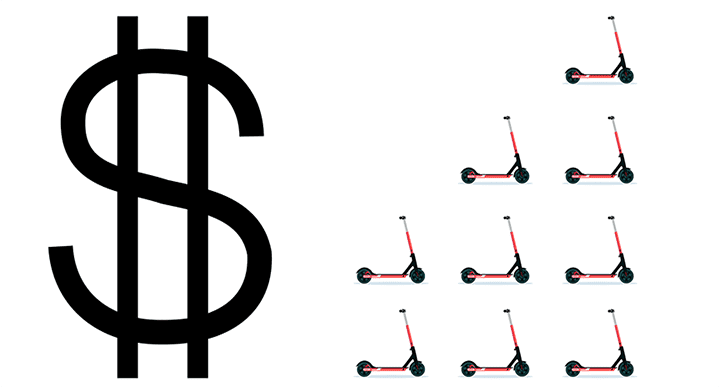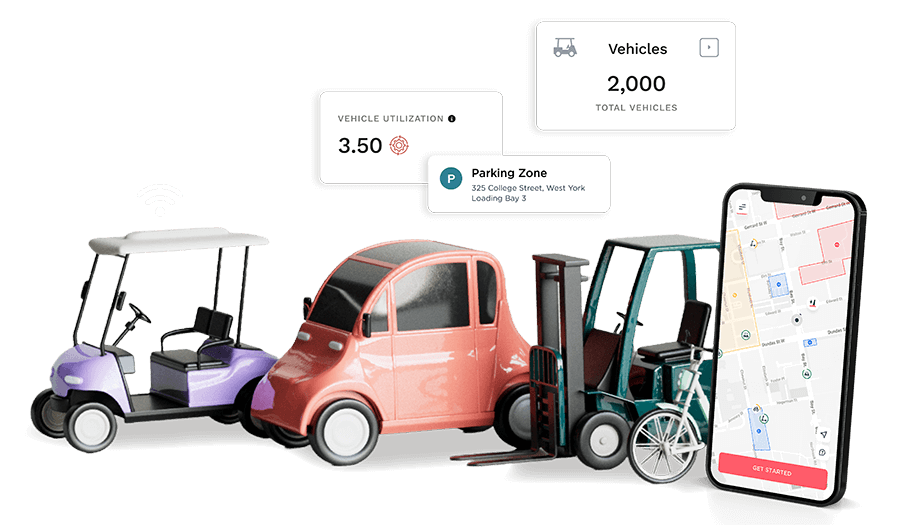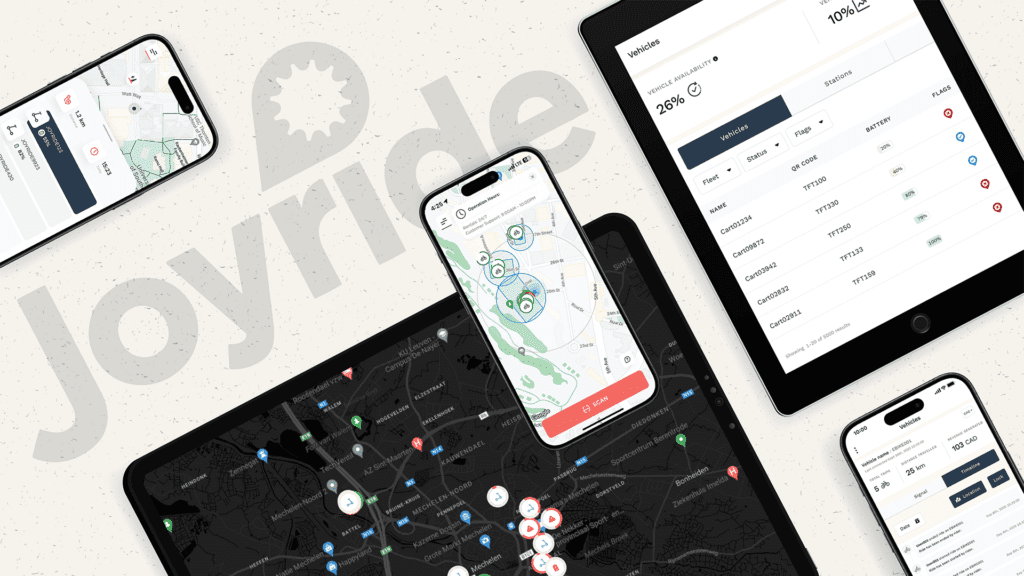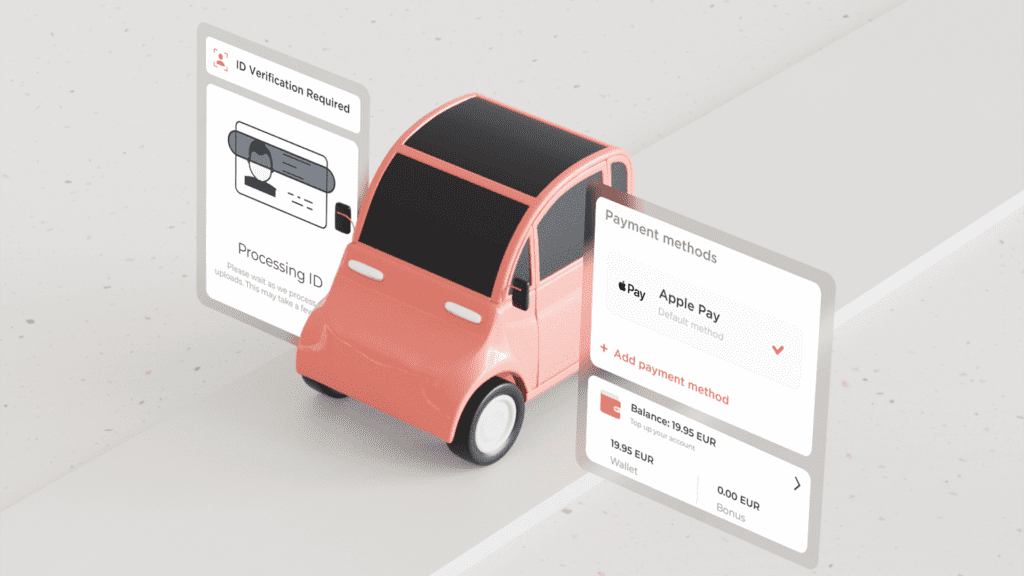Updated: November 15th, 2022
Over the past two years, cities have drastically reshaped their streets to make room for more sustainable transit options. In a 2019 report, the number of rides taken by Americans via dockless scooters, bikes, and bike share systems stood at 136 million. Moreover, the report on the e-scooter market (2021-2025) estimates an incremental growth of 16.32 million units, at a CAGR of over 16%.
Entrepreneurs have seized this viable business venture and capitalized on the scooter-rental systems. And while the pandemic proved that micromobility has its social (distancing) and environmental benefits, there are financial ones, too.
In addition to providing the software platform and white-label mobile app needed to power any scooter-share business, Joyride assists with hardware purchasing, insurance and city permit setup, through to website development and branding services for scooter startups.
Part of offering turnkey, one-stop-shop solutions means we’re able to view the whole picture of the scooter-rental launch process, financial upsides included.
The Financial Benefits of a Scooter-Sharing Business
Overall, the scooter-share industry experiences an estimated 27% to 30% gross profit margin on scooter rides, according to reports from Joyride’s current operators and those released by leading micromobility companies.
Here, we’ve broken down the margins so you can gauge your gains based on varying fleet sizes.
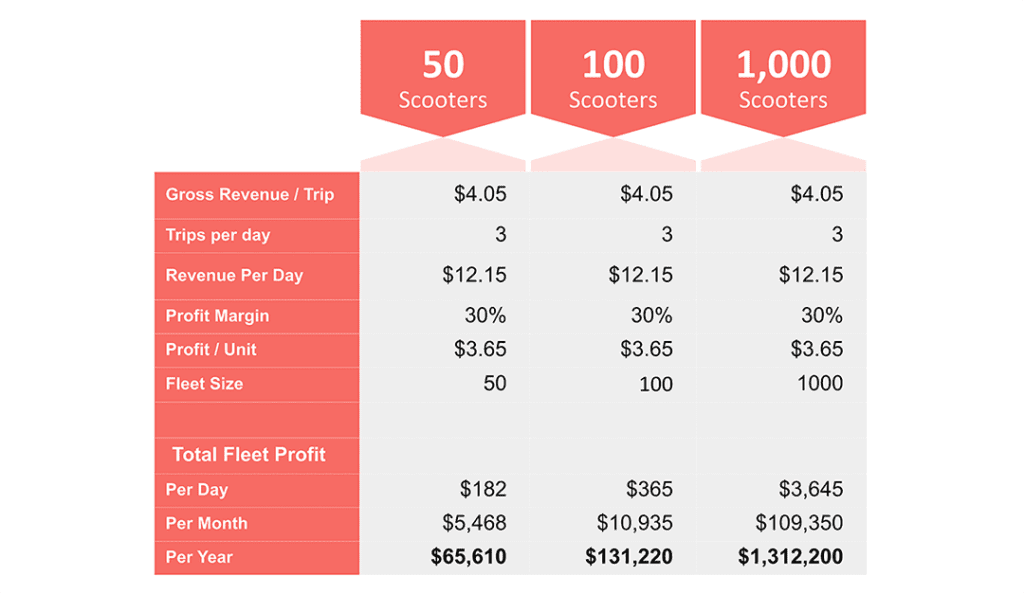
Whether you operate a private or a public e-scooter business, profit is bound to happen. A private shared system for resorts or campuses eliminates the permit process and the pain of insurance while a B2B fleet comes with built-in customers waiting to ride.
We’ve estimated the figures based on the earnings statements of top scooter-share companies. For a fleet size of 50 scooters, the upfront costs incurred in the first month of operation would total approximately $50,000—this is taking into account the hardware (roughly $650/scooter), insurance, city permits and scooter software.
Fast New eScooter Business Recovery
There are other varying and fixed costs involved, but with industry profit margins in place, a 50-vehicle fleet owner can expect to recover upfront costs in three months. In other words, the company will become profitable by month four, typically. The profits will naturally increase based on fleet size.
This is why independent, local scooter companies are finding success in an industry once dominated by global micromobility giants running through their cash at an entirely different pace.
But at the same time, mobility business owners need to determine how to extend the lifespan of their vehicles or offset the costs if they go over the limit. These two factors are important in building a successful fleet business model. Additionally, one needs to review overhead costs related to vehicle maintenance and usage.
Key Factors That May Impact Your Revenue Model
|
Maintenance Cost – Fleet maintenance is an unavoidable cost and may vary depending upon the type of vehicle and its usage. |
|
Charging Cost – Docking stations or free-floating services, it is necessary to calculate the cost of charging for continued use. |
|
Marketing – Promotion is essential for your business growth and establishing your foot in the market. |
|
Customer Support – Users require regular support from customer service representatives to resolve en route or other inquiries. |
|
IT Support – Vehicles need IoT systems, sim cards, data, software and other tech requirements to operate. |
|
Miscellaneous Costs – Like any other vehicle service, your fleet is subject to insurance costs, city permits, etc. |
|
Seasonality – The time of year your service stalls or slows down due to environmental factors or weather conditions. |
Vehicle Ridership Impacts Your Financial Model
The use of vehicles tends to increase based on the availability of scooters and bikes and the ease of access to nearby stations. The systems with larger fleets and those with a bigger shared infrastructure will attract higher ridership. However, the ridership gets impacted by various factors such as:
- The density of docking stations if it’s not a dockless fleet
- Availability of travel lanes
- The level of integration within the transport network
- The extent of rider outreach
- The vendor consciousness for fleet management
Now’s The Time to Grow Your Scooter Fleet with Joyride
With minimal capital outlay and turnkey solutions that provide all of your fixed and monthly operating costs on one streamlined platform, the revenue potential of operating a scooter-share business is substantial.
Let’s talk about a plan that best suits your fleet size and growth trajectory. Contact us today.

